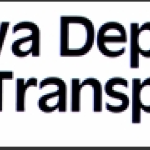- Settore: Government; Transportation
- Number of terms: 1862
- Number of blossaries: 0
- Company Profile:
Iowa Department of Transportation (DOT) is the state agency responsible for the organization, construction, and maintenance of the of Iowa's highway system. Located in Ames, Iowa DOT is also responsible for licensing drivers and programming and planning for aviation, rail, and public transit.
An arch bridge is based on the ancient concept of spanning an opening with a curved structural member. The arch transmits the load from the bridge deck to the abutments on both sides of the span and thus to the ground below. Early arch bridges were built of stone blocks wedged together to form the arch. Short modern arch bridges may use wood or concrete, while longer arch spans are built of steel. Since the arch requires no central support, it can be used to bridge long open spans. The arch can be either above or below the bridge deck. The arch pushes downward and outward against its abutments, which must be heavy to resist the thrust. Since the abutments transfer both horizontal and vertical forces from the bridge deck, arch bridges can only be used where the ground or foundation is solid and stable. The curved arch structure offers a high resistance to bending forces.
Arch bridges can be constructed with the deck above the arch (a deck arch bridge), or the deck can be hung from a segment of the arch which rises above the deck (a through arch or tied arch bridge). In a deck arch bridge, the space between the bottom of the arch and the deck can be solid (a closed spandrel deck arch) or open with supporting vertical members (an open spandrel deck arch).
Industry:Construction
One of the vertical compression members of a truss that is perpendicular to the bottom chord.
Industry:Construction
Meeting held with purpose of receiving public comments on proposed projects.
Industry:Construction
A metal fastener used in pre-1970 construction; made with a rounded preformed head at one end and installed hot into a predrilled or punched hole; the other end was hammered into a similar shaped head thereby clamping the adjoining parts together.
Industry:Construction
Arches use a curved structure that provides a high resistance to bending forces. Unlike girder and truss bridges, both ends of an arch are fixed in the horizontal direction (i.e., no horizontal movement is allowed in the bearing). Thus when a load is placed on the bridge (e. G. , a car passes over it) horizontal forces occur in the bearings of the arch. These horizontal forces are unique to the arch and as a result arches can only be used where the ground or foundation is solid and stable.
Like the truss, the roadway may pass over or through an arch or in some cases both Structurally, there are four basic arch types: hinge-less, two-hinged, three hinged, and tied arches.
The three-hinged arch adds an additional hinge at the top or crown of the arch. The three-hinged arch suffers very little if there is movement in either foundation (due to earthquakes, sinking, etc. ) However, the three-hinged arch experiences much more deflection and the hinges are complex and can be difficult to fabricate. The three-hinged arch is rarely used anymore.
Industry:Construction
Load-carrying beams in the viaduct’s superstructure that rest on abutments and other intermediate supports.
Industry:Construction
A two-hinged arch is supported by a pinned connection at each end. A three-hinged arch also includes a third pinned connection at the crown of the arch near the middle of a span. Compare to fixed arch.
Industry:Construction
A functionally obsolete bridge is one that was built to standards that are not used today. These bridges are not automatically rated as structurally deficient, nor are they inherently unsafe. Functionally obsolete bridges are those that do not have adequate lane widths, shoulder widths, or vertical clearances to serve current traffic demand, or those that may be occasionally flooded.
A functionally obsolete bridge is similar to an older house. A house built in 1950 might be perfectly acceptable to live in, but it does not meet all of today’s building codes. Yet, when it comes time to consider upgrading that house or making improvements, the owner must look at ways to bring the structure up to current standards.
Industry:Construction
